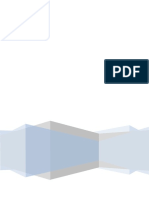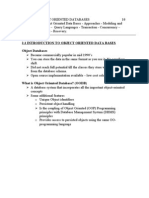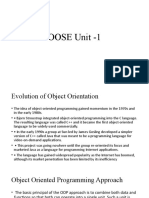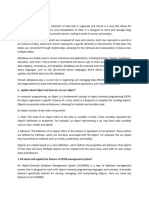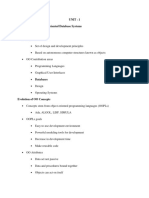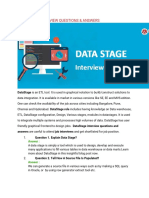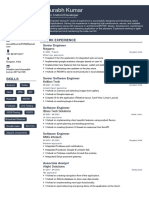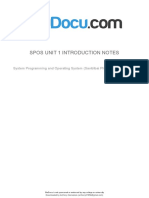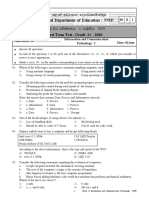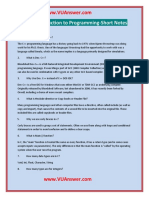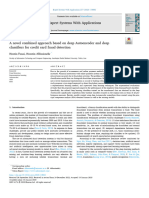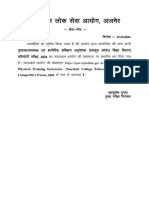0% found this document useful (0 votes)
49 views11 pagesOodbms Final
An Object-Oriented Database Management System (OODMS) is designed to store and manage data as objects, which encapsulate both data and behavior, facilitating complex data structures and relationships. While OODMS offers advantages such as improved performance and natural representation of complex data, it also faces challenges like limited adoption and lack of standardization compared to traditional relational databases. OODMS is particularly useful in applications requiring complex data handling, such as engineering and multimedia, with examples including MongoDB and Apache Cassandra.
Uploaded by
Josue TchoupaCopyright
© © All Rights Reserved
We take content rights seriously. If you suspect this is your content, claim it here.
Available Formats
Download as DOCX, PDF, TXT or read online on Scribd
0% found this document useful (0 votes)
49 views11 pagesOodbms Final
An Object-Oriented Database Management System (OODMS) is designed to store and manage data as objects, which encapsulate both data and behavior, facilitating complex data structures and relationships. While OODMS offers advantages such as improved performance and natural representation of complex data, it also faces challenges like limited adoption and lack of standardization compared to traditional relational databases. OODMS is particularly useful in applications requiring complex data handling, such as engineering and multimedia, with examples including MongoDB and Apache Cassandra.
Uploaded by
Josue TchoupaCopyright
© © All Rights Reserved
We take content rights seriously. If you suspect this is your content, claim it here.
Available Formats
Download as DOCX, PDF, TXT or read online on Scribd
/ 11






























